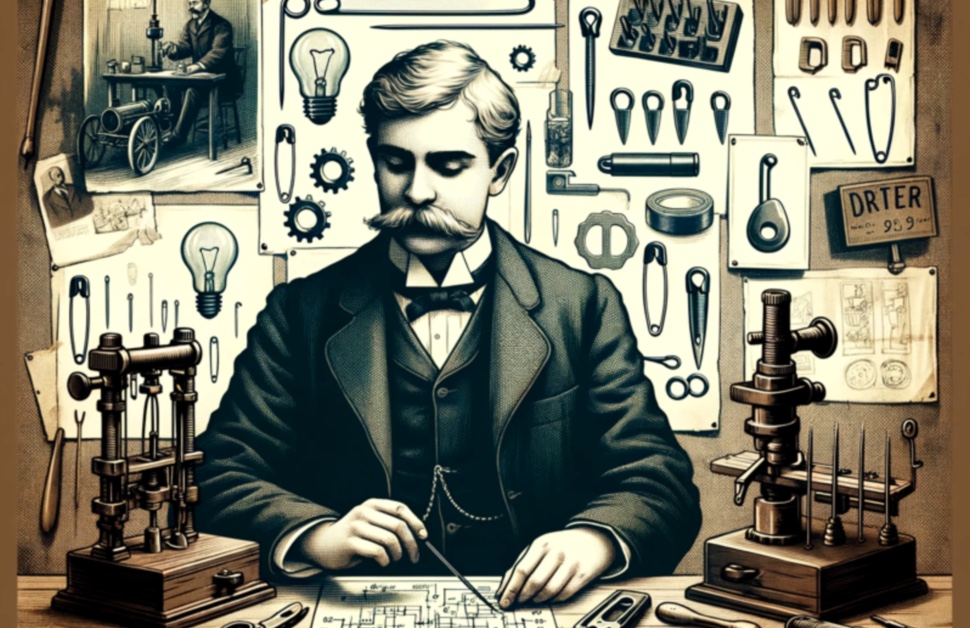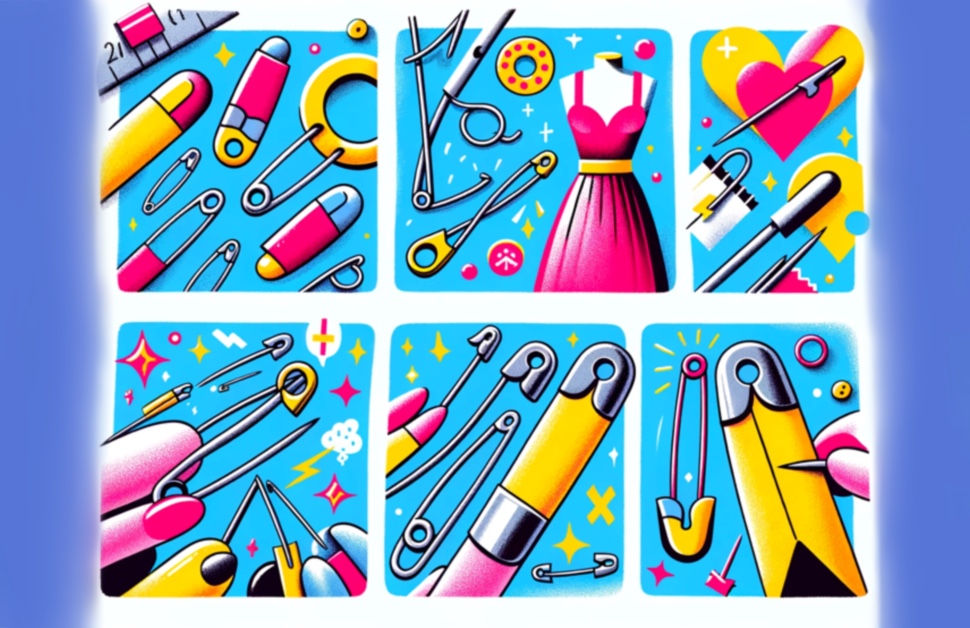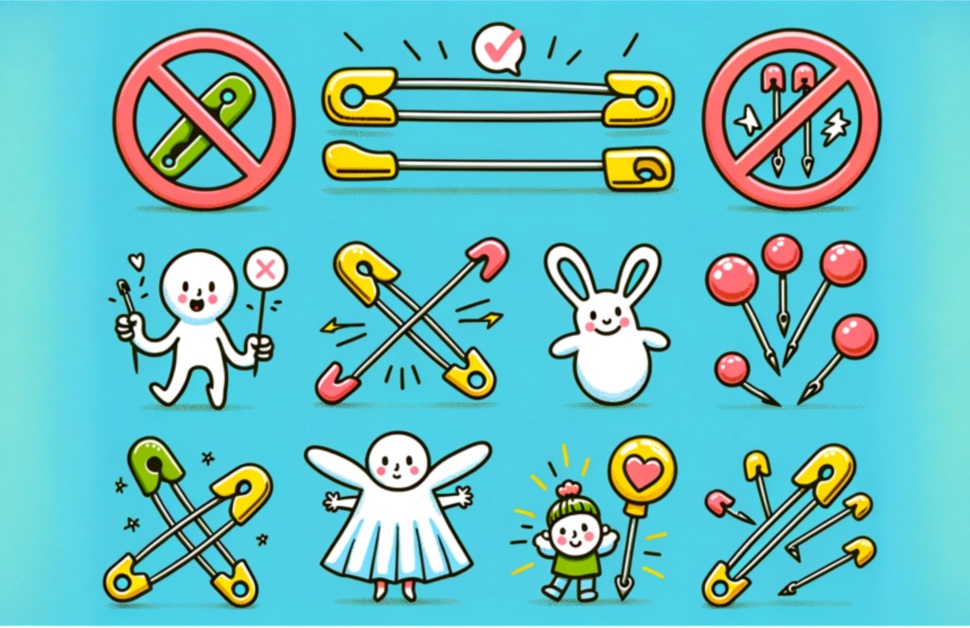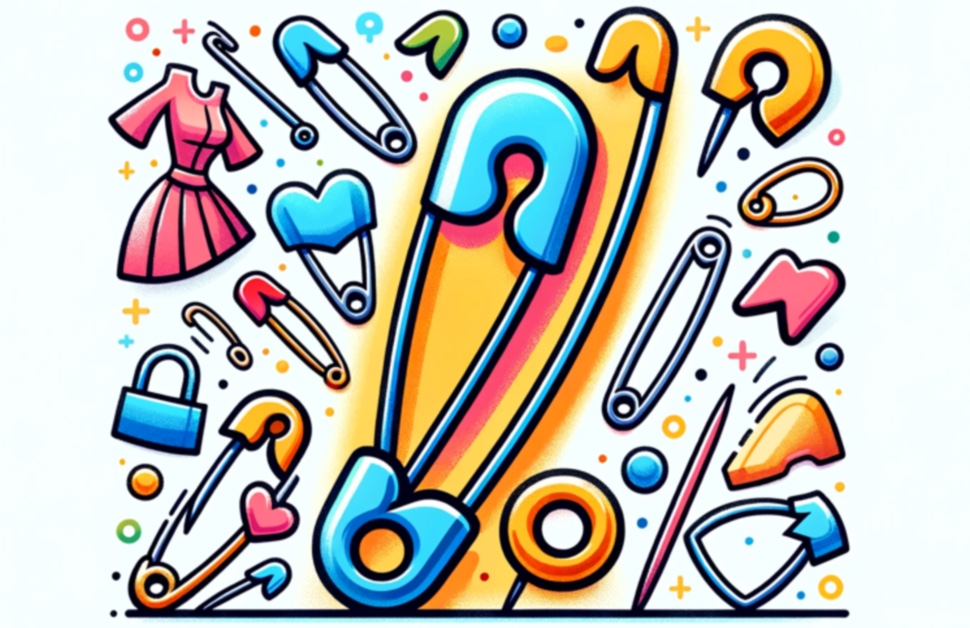
A Brief History of the Safety Pin
Walter Hunt, an American mechanic, needed to settle a $15 debt in 1849, so he invented the safety pin. His design, which includes a spring mechanism and a clasp cover, epitomizes simplicity and utility. Surprisingly, this design has stayed almost the same over the years. Hunt sold the patent for just $400, not realizing the profound impact his invention would have.

Design and Functionality
The design of the safety pin is brilliantly simple. It features a coiled spring at one end and a clasp at the other to protect users from the sharp point. This design makes the pin easy to open and close, offering a safe and reliable way to fasten materials together.

Diverse Uses of the Safety Pin and it’s Cultural Significance
Safety pins have gone beyond their original use of fastening fabric, finding roles in:
- Emergency Repairs and Alterations: These pins are staples in emergency sewing kits. They can quickly mend a tear, secure a loose button, or adjust the length of garments temporarily.
- Fashion and Jewelry: The fashion world, especially punk fashion, adopted safety pins as symbols of rebellion. Designers use them to decorate clothes and create makeshift jewelry. High fashion has also embraced oversized, decorative safety pins for garments and accessories.
- Medical Uses: Professionals use safety pins to secure bandages and close patient gowns in medical settings.
- Political and Social Statements: Individuals wear safety pins to show solidarity with marginalized groups. They also use them to express a commitment to safety and inclusion after significant events.

Safety Considerations
Safety pins, despite their benefits, can be hazardous, especially to young children. It’s essential to keep safety pins closed when not in use and store them away from children. This precaution helps prevent accidental ingestion or injury.
From quick fixes for clothing mishaps to becoming a statement accessory in punk fashion, the safety pin’s versatility and functionality have solidified its place in history and culture. Its invention might have been a mere convenience, but its legacy celebrates the enduring importance of simple designs in daily life. Whether serving practical purposes or symbolizing cultural identity, the safety pin remains a vital and iconic tool in many aspects of human life.




